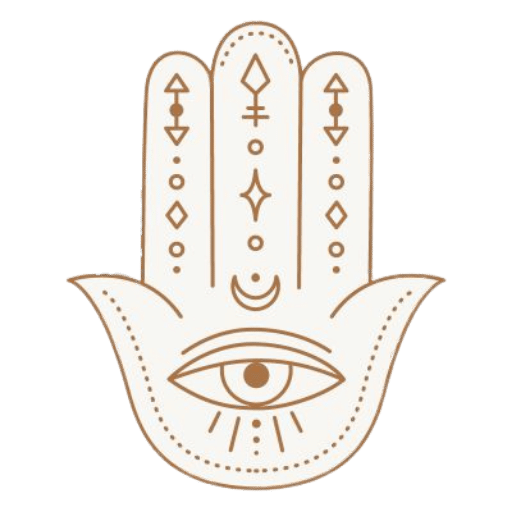
Exploring benefits, procedures, and contraindications of Antar Kumbhaka
The Inner Breath Retention in Pranayama & hatha yoga according to the Himalayan Tradition
Breath is the essence of life, and the yogic practices of pranayama delve deep into harnessing the power of breath for physical, mental, and spiritual well-being. Among the various pranayama techniques, Antar Kumbhaka, also known as inner breath retention, stands out as a profound and transformative practice.
Antar Kumbhaka involves holding the breath inside the body after a complete inhalation or exhalation. It is an advanced pranayama technique that requires control, awareness, and a deep connection with one’s breath. This practice holds immense potential for unlocking inner wisdom, awakening dormant energies, and experiencing profound states of consciousness.
In this article, we will delve into the depths of Antar Kumbhaka, exploring its benefits, techniques, and precautions. We will uncover the underlying philosophy and guide you through the steps to practice this transformative breath retention technique.
Whether you are a seasoned yogi or new to the world of pranayama, Antar Kumbhaka offers a unique opportunity to explore the depths of your breath and unlock the untapped potential within.
Join us on this journey as we unravel the mysteries of Antar Kumbhaka and discover how this practice can bring harmony, balance, and spiritual growth into our lives. Harness the power of your breath, embrace the stillness within, and embark on a transformative exploration of Antar Kumbhaka, the inner breath retention.
Pranayama Glossary: the meaning of Kumbhaka, Puraka, and Rachaka
Before we delve into the fascinating world of breath retention it’s important to get a few terms straight, so here are the meanings of the most important Sanskrit words used in pranayama practice.
Puraka: Puraka is a Sanskrit term used in the context of pranayama, referring to the inhalation or the process of taking a breath in. It is the first phase of the breathing cycle and involves drawing the breath into the body, filling the lungs with fresh oxygen.
Rechaka: Rechaka, also known as exhalation, is another Sanskrit term used in pranayama. It signifies the outward flow or release of breath from the body. Rechaka is the second phase of the breathing cycle, where the breath is expelled, allowing the body to release carbon dioxide and other toxins.
Antar Kumbhaka: Antar Kumbhaka translates to “inner breath retention” in Sanskrit. It is a pranayama technique where after inhalation, the breath is held inside the body for a specific duration before exhalation. Antar Kumbhaka helps to cultivate awareness, concentration, and the regulation of energy within the practitioner.
Bahir Kumbhaka: Bahir Kumbhaka refers to “external breath retention” in Sanskrit. It is a pranayama practice where, after exhalation, the breath is held outside the body for a certain period before inhaling again. Bahir Kumbhaka enhances control over the breath, improves lung capacity, and allows for the exploration of the subtle energies associated with breath retention.
Kevala Kumbhaka: Kevala Kumbhaka, also known as spontaneous breath retention, is a state of natural breath suspension that occurs spontaneously during deep meditation or advanced pranayama practice. In Kevala Kumbhaka, the breath is naturally suspended without any effort or control from the practitioner. It is considered a state of profound stillness and transcendence, where the individual experiences a deep connection with the universal consciousness.
Kevala Kumbhaka is achieved through consistent and dedicated practice of pranayama and meditation, and it is not intentionally induced like Antar and Bahir Kumbhaka. Kevala Kumbhaka is often described as a higher state of breath control and is regarded as an advanced stage in the practice of pranayama.
History and Philosophy of Antar Kumbhaka
Antar Kumbhaka, the practice of inner breath retention, has a rich history deeply rooted in ancient yogic traditions. Its origins can be traced back to the ancient texts of yoga, particularly the Hatha Yoga Pradipika and the Yoga Sutras of Patanjali.
The Hatha Yoga Pradipika (here on a commentary version), a seminal text on Hatha Yoga, describes the practice of Kumbhaka as one of the fundamental techniques to awaken the dormant energies within. It mentions Antar Kumbhaka as an advanced form of breath retention where the breath is held inside the body after inhalation or exhalation.
The Yoga Sutras of Patanjali, a classical text outlining the philosophy and practices of yoga, also alludes to the significance of Kumbhaka. Patanjali describes it as one of the components of pranayama, emphasizing the importance of breath control to still the fluctuations of the mind and attain higher states of consciousness.
Throughout the centuries, various yoga lineages and traditions have preserved and passed down the knowledge of Antar Kumbhaka. Renowned yogis and sages, such as Swami Sivananda, Swami Satyananda Saraswati, and B.K.S. Iyengar, have further elucidated the practice and its profound effects on the physical, mental, and spiritual aspects of an individual’s life.
In contemporary times, Antar Kumbhaka continues to be a significant aspect of many yoga practices, including Kundalini Yoga, Kriya Yoga, and Pranayama. It is revered as a potent technique for exploring the depths of consciousness, purifying the energetic channels, and awakening the dormant spiritual potential within.
As practitioners delve into the practice of Antar Kumbhaka, they honor the ancient wisdom passed down through generations and embark on a journey that transcends time, connecting them to the timeless wisdom of yogic traditions.
Techniques of Antar Kumbhaka – How to Do it
Antar kumbhaka can be added to any pranayama technique, indeed what makes a breathing exercise into pranayama is the use of breath retention… there’s no pranayama without kumbhaka!
By incorporating breath retention, pranayama transcends mere breathing exercises and becomes a powerful tool for self-realization and inner exploration.
Here are a few examples of how to practice antar kumbhaka:
- One way to practice Antar Kumbhaka is by integrating it into Nadi Shodhana or alternate nostril breathing. After inhaling through one nostril, gently close both nostrils and hold the breath inside, allowing the energy to circulate within. This period of inner retention deepens the meditative aspect of the practice and enhances the balancing and harmonizing effects on the subtle energy channels. In nadi shodhana the puraka, rechaka, and kumbhaka are usually counted and practiced in a duration rati.o
- Another technique to experience Antar Kumbhaka is through Bhramari Pranayama or the humming bee breath. After a deep inhalation, softly close the ears with the thumbs and the eyes with the palms of your hands. Hold your breath inside for any duration from 1 to 20 seconds. On the exhale, produce a gentle humming sound that resonates throughout the entire being. This inner retention allows the vibrations to permeate and harmonize the mind, body, and spirit.
- In Bhastrika Pranayama, a forceful inhalation and exhalation technique, Antar Kumbhaka is traditionally integrated as well. After a round of vigorous inhalation and exhalations, close both nostrils and hold the breath in, allowing a deep internal cleansing and stillness to settle within. This practice enhances the detoxifying effects of Bhastrika and cultivates a heightened sense of awareness.
Benefits of Antar Kumbhaka
Antar Kumbhaka, or inner breath retention, offers numerous benefits for those who incorporate it into their pranayama practice.
- Enhanced breath control: Antar Kumbhaka improves mastery over the breath, deepening the connection between the body, mind, and energy.
- Improved respiratory efficiency: By retaining the breath inside, Antar Kumbhaka optimizes the exchange of oxygen and carbon dioxide, leading to better oxygenation of cells and enhanced vitality.
- Heightened awareness and concentration: Practicing Antar Kumbhaka develops focused awareness, allowing practitioners to observe subtle energy movements and sensations during breath retention, promoting a meditative state of mind.
- Preparation for deeper meditation: Antar Kumbhaka cultivates a calm and centered state of mind, creating a conducive environment for entering deeper states of meditation and inner exploration.
- Regulation of prana (life force energy): Antar Kumbhaka helps regulate the flow of prana through the nadis (subtle energy channels) in the body, promoting harmonious energy balance and overall well-being.
- Inner stillness and clarity: Regular practice of Antar Kumbhaka can induce a sense of inner stillness, mental clarity, and heightened spiritual awareness.
Incorporating Antar Kumbhaka into your pranayama practice can offer these significant benefits, supporting both physical and mental well-being while facilitating a deeper connection with the self.
Side Effects, Contraindications, and Risks of Antar Kumbhaka
While Antar Kumbhaka can be a beneficial practice, it is important to be aware of certain contraindications and potential risks associated with it. Here are some points to consider:
- Respiratory conditions: Individuals with respiratory disorders such as asthma, chronic obstructive pulmonary disease (COPD), or any other respiratory ailment should approach Antar Kumbhaka with caution. Breath retention may exacerbate these conditions and cause discomfort or breathing difficulties.
- High blood pressure: People with high blood pressure or hypertension should avoid prolonged breath retention, as it can elevate blood pressure levels further. It is advisable to consult a healthcare professional before practicing Antar Kumbhaka.
- Cardiovascular issues: Individuals with heart problems, such as coronary artery disease, arrhythmias, or a history of heart attacks, should exercise caution with breath retention practices. Breath retention can put additional strain on the cardiovascular system, potentially leading to complications.
- Pregnancy: Pregnant women should avoid Antar Kumbhaka, especially during advanced stages of pregnancy. Breath retention can alter blood circulation and may not be suitable for the well-being of both the mother and the unborn child. It is recommended to consult with a qualified prenatal yoga instructor or healthcare provider for appropriate modifications.
- Mental health concerns: Those with anxiety disorders, panic attacks, or any psychological conditions that involve breath-related triggers should be cautious when practicing breath retention. It is crucial to listen to your body and avoid any practices that may cause distress or discomfort.
- Individual limitations: Each person’s physical and physiological capacities are unique. It is essential to honor your body’s limitations and not push beyond what feels comfortable and safe for you. Start with shorter breath retentions and gradually increase the duration as your practice progresses.
If you’re new or in the beginning stages of pranayama exploration, it’s better to practice under the guidance of a qualified yoga instructor or pranayama expert who can provide proper directions, offer modifications, and ensure your safety throughout the practice.
If you experience any adverse effects or discomfort, it is recommended to discontinue the practice and seek guidance from a healthcare professional.


